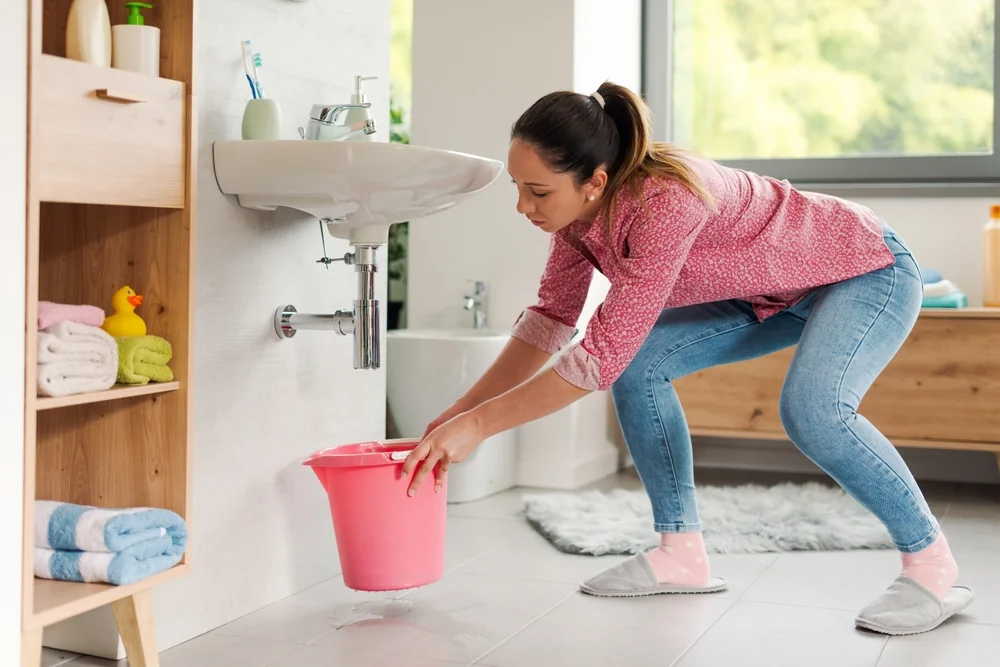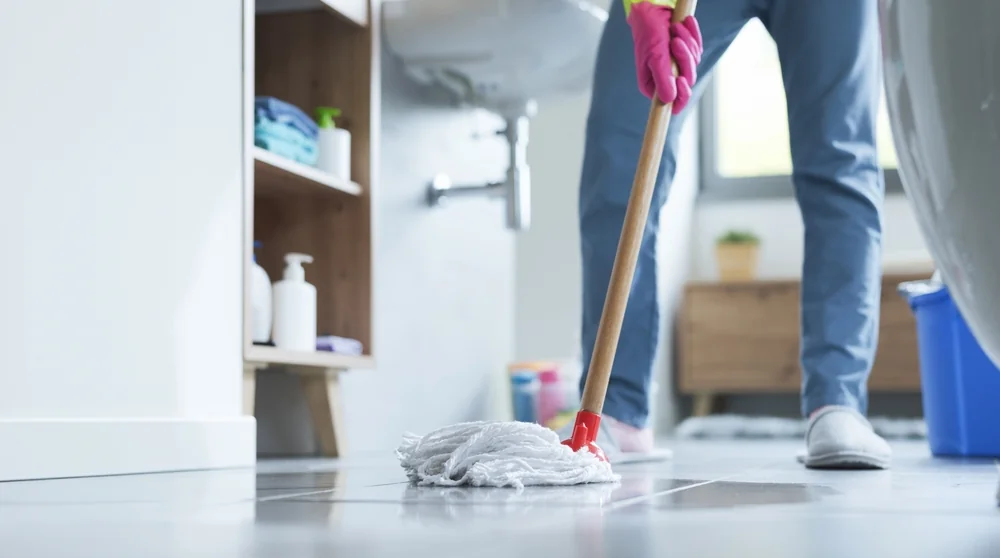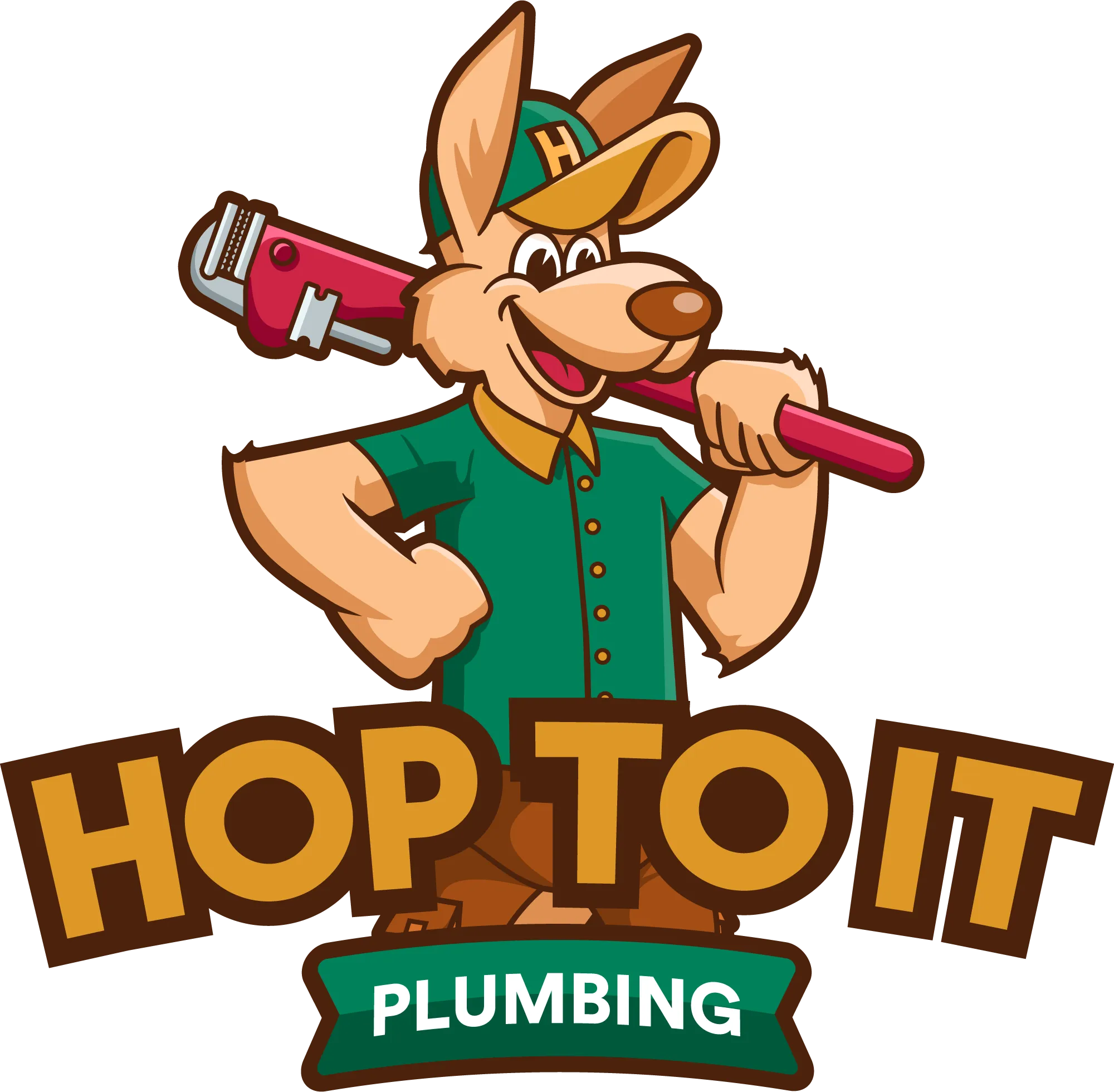Plumbing emergencies escalate fast. At Hop To It Plumbing, we have seen first-hand how a small leak, a blocked drain, or an overflowing toilet can turn into costly damage in minutes. As an emergency plumber in Brisbane, we respond quickly, but what you do in the first few minutes matters just as much. Stay calm, turn off the water at the mains if it is safe, isolate power near any leak and move valuables out of harm’s way.
This guide sets out clear, practical steps to protect your home and keep everyone safe until a licensed plumber arrives. You will find immediate actions to take, step-by-step responses for burst pipes, blocked drains and toilet overflows, plus what to keep in a simple emergency kit, how to locate and use shut-off valves, how to manage electrical risks and when to call the professionals. Here is what to do when a plumbing crisis hits.

What To Do When a Plumbing Crisis Hits
When something goes wrong, timing is everything. The first few moments after discovering a leak or blockage are crucial in reducing the extent of the damage. Acting quickly while staying composed can stop the problem from spreading and help you avoid unnecessary stress. The key is to focus on safety and prevention until professional help arrives.
Step-by-Step Response for Burst Pipes
Burst pipes can cause sudden flooding and property damage if not addressed immediately. Quick and systematic action can reduce water loss and make repairs easier for experts later on. It’s important to know exactly where your main valve is located and how to shut it off safely.
- Identify the source of the burst as quickly as possible and shut off the main water valve to prevent continuous flow that can cause flooding throughout the home.
- Turn on nearby taps to relieve pressure in the pipes and drain out any remaining water that could worsen the situation.
- Move valuables and furniture away from affected areas to protect them from moisture damage while also allowing easy access for repairs.
Emergency Actions for Blocked Drains
Blocked drains can escalate fast, leading to foul smells and potential overflow. Knowing how to handle them safely helps you avoid making the problem worse. Avoid using strong chemicals or pushing objects down the drain, as these can damage the pipes.
- Use a plunger or drain snake to try to loosen the blockage and restore flow without resorting to harmful chemical cleaners that can corrode the pipes.
- Avoid running more water down the drain while waiting for help to stop the issue from backing up into sinks or showers.
- If multiple drains are blocked at once, it may indicate a deeper issue. Turn off water appliances to avoid overflow in other parts of the home.
Dealing with Overflowing Toilets
An overflowing toilet can cause contamination and property damage if not handled properly. Acting quickly ensures that waste doesn’t spread throughout the bathroom or adjacent areas. Hygiene and safety should always come first when dealing with this type of emergency.
- Turn off the water valve behind the toilet immediately to stop the flow and prevent further spillage onto the floor.
- Avoid flushing again, as this only increases the risk of overflow and worsens the mess that needs to be cleaned later.
- Use towels or old rags to contain any water and sanitise the area after the issue is resolved to maintain hygiene.
Essential Tools and Supplies to Keep at Home
Preparation can make all the difference when an unexpected problem occurs. Having a few key tools and supplies stored in an accessible location allows you to act swiftly. These items can prevent small issues from becoming major problems, buying you precious time before professionals arrive. Investing in a simple emergency kit also builds confidence and readiness for any situation.
Building a Home Plumbing Emergency Kit
Every household should have basic tools for handling minor issues or for temporary fixes. A well-equipped kit helps you manage emergencies effectively and safely. Keeping it in a dry and easy-to-access spot ensures you can find everything when it’s needed most.
- Include essentials like a plunger and adjustable wrench for basic maintenance and immediate action during emergencies.
- Store a small bucket and rags with a torch to help you clean up leaks and work safely in low-light or flooded conditions.
- Add the contact number of your preferred professional so you can quickly reach them without wasting time searching for help.
Understanding the Importance of Shut-Off Valves
Shut-off valves are your first defence during an emergency. Knowing their locations and how to operate them quickly can save you from major damage. Regular checks ensure they work properly when needed.
- Familiarise yourself with the main water valve and individual shut-offs for appliances to control the flow during leaks.
- Label valves clearly to make them easy to identify for all household members, especially during stressful moments.
- Test valves occasionally by gently turning them off and on to ensure they haven’t become stiff or corroded over time.
Stocking Safety Gear and Protective Equipment
Handling emergencies can expose you to slippery surfaces and bacteria. Having proper safety gear protects you from injury while managing the situation. These items are simple but highly effective in keeping you safe.
- Keep durable gloves and waterproof boots nearby to reduce exposure to contaminated water or cleaning chemicals.
- Use non-slip mats around areas prone to leaks to avoid accidents while working on wet floors.
- Always have disinfectant wipes or sprays ready to clean surfaces that may have come in contact with waste or dirty water.

Preventing Further Damage Before Help Arrives
There are times when damage isn’t immediate but can worsen quickly if left unchecked. Taking preventive action helps protect your property from structural and electrical risks. Temporary measures can keep the problem under control until repairs are completed. Staying proactive during this time can make a big difference in the final outcome.
Shutting Off Water Safely
Knowing how to stop the water flow is crucial in emergencies. This action limits the spread of damage and gives you time to assess the situation. It’s one of the simplest yet most effective steps to control a plumbing crisis.
- Locate and turn off the main valve to cut off the water supply completely, reducing the risk of leaks spreading through the property.
- Open a few taps to release built-up pressure and drain any remaining water from the system.
- Inform everyone in the household to avoid turning taps back on until repairs are completed to prevent a repeat of the issue.
Temporary Solutions for Major Leaks
Temporary fixes can help prevent flooding and further water damage before professionals arrive. They’re not permanent but can make a big difference in minimising mess and cost. Using simple materials effectively can keep things manageable.
- Wrap leaking areas with rubber tape, sealant or even a piece of thick plastic to slow the flow of water.
- Use containers or buckets to catch dripping water to prevent damage to floors and furniture.
- Avoid placing heavy objects near leaks to reduce the risk of structural strain or collapse in affected areas.
Managing Electrical Risks During Plumbing Issues
Water and electricity are a dangerous combination. During leaks or floods, it’s essential to prioritise electrical safety to prevent accidents. Quick action and caution can protect both people and property.
- Turn off the electricity at the main switchboard if water comes into contact with outlets or appliances.
- Keep everyone away from wet areas until a professional confirms it’s safe to restore power.
- Never attempt to handle electrical devices in damp conditions to avoid the risk of electric shock.
When to Call the Professionals: Knowing the Signs
There are situations where quick fixes won’t be enough and calling experts is the best option. Recognising when to ask for help prevents further complications and ensures repairs are handled correctly. Some signs indicate serious issues that require trained attention. Ignoring these warnings can lead to costly long-term consequences.
Persistent Low Water Pressure
Low pressure across multiple fixtures can point to hidden problems within the system. While small dips in pressure may seem harmless, persistent issues can signal deeper damage. Understanding when it’s more than a simple clog helps prevent worse outcomes.
- If pressure remains low after cleaning aerators or checking valves, there may be a leak or corrosion inside the pipes.
- Uneven pressure between different taps may indicate a blockage or broken pipe that needs inspection.
- Continuous low pressure accompanied by damp walls often points to a hidden leak behind surfaces.
Repeated Drain Backups
When drains constantly back up despite cleaning efforts, it’s usually a sign of a larger issue underground. Regular overflow or gurgling noises suggest that there’s more than just surface debris causing the problem. In these cases, expert intervention is necessary.
- Frequent backups may point to damaged or collapsed sections that prevent waste from flowing properly.
- Bad odours coming from drains often mean there’s trapped waste that needs professional clearing.
- Ignoring repeated blockages can result in pipe bursts or contamination that’s expensive to fix.
Unexplained Water Bills and Damp Areas
A sudden rise in water bills or visible damp spots can be early warnings of hidden leaks. These subtle signs often go unnoticed until damage becomes serious. Monitoring usage and inspecting regularly can save you from major repairs later.
- If bills increase without added usage, it’s possible that water is leaking behind walls or under floors.
- Mould or discolouration on walls and ceilings often means moisture is seeping through from damaged sections.
- Regular checks by professionals can detect and resolve hidden leaks before they cause structural damage.
Plumbing problems can strike without warning, but being prepared makes all the difference. Having a clear plan, the right tools and basic know-how helps you respond quickly and confidently. Acting early can save time and money while avoiding unnecessary stress so your home stays safe and comfortable.
Hop To It Plumbing believes that every homeowner deserves peace of mind when facing unexpected challenges. Whether it’s a sudden leak or an urgent blockage, knowing what to do until help arrives can prevent serious damage. A calm approach and proper preparation ensure you handle any situation with confidence and control.
-full-color-rgb-2000px-w-72ppi.webp)

